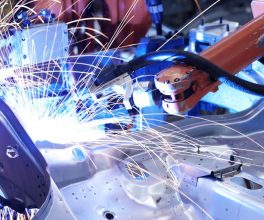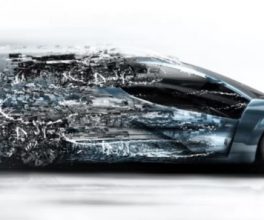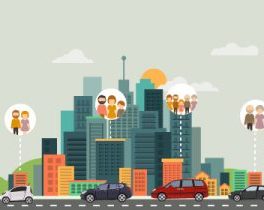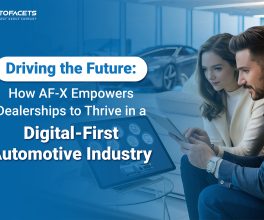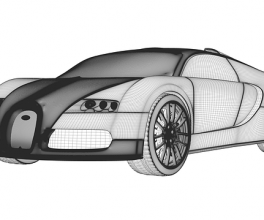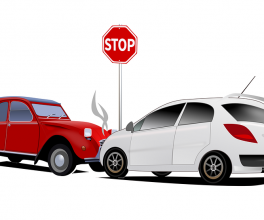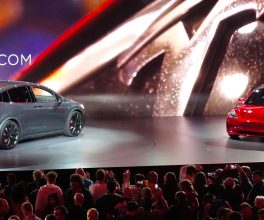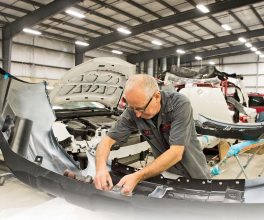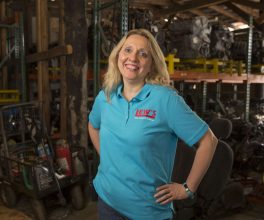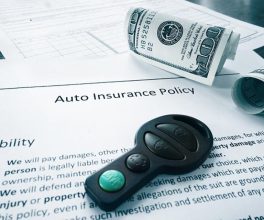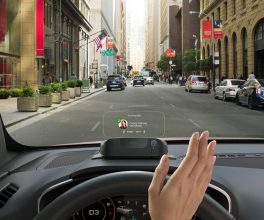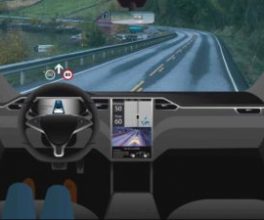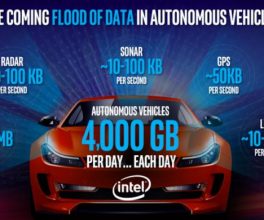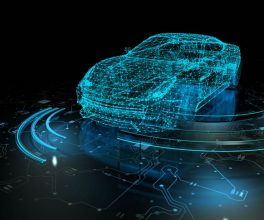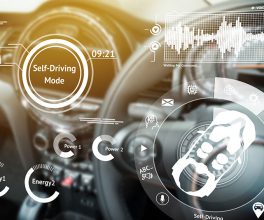Early last November Waymo announced that while it will continue its tests in Washington, California, and Texas, it was ready to start ferrying consumers in its fleet of driverless minivans in Chandler, a suburb of Phoenix, Arizona. Later the same month GM’s management team held an investor day to present the roadmap of its autonomous vehicle program and detail the mobility services it intends to offer using such vehicles starting in 2019, building on its tests in San Francisco and Scottsdale, another suburb of Phoenix. These larger-scale efforts follow a year during which various company types, from incumbent OEMs, to automotive suppliers, global ride-hailing companies, large technology companies, to startups have been demonstrating autonomous vehicles of many form factors targeting a variety of next-generation mobility applications.
Next-generation mobility refers to the movement of people and goods using a combination of intelligent and often autonomous, connected and electrified (ACE) vehicles, including transport services such as ride-hailing, car-sharing, and others, that are offered on a short-time, on-demand, or as-needed basis. Next-generation mobility will not only impact the automotive OEMs, but also the companies that today provide the first generation of mobility services, such as Uber, Lyft, and Mobike. With the first wave of acquisitions, investments, and partnerships already in place, it is important to continue making projections about how next-generation mobility will evolve in the medium-term so that we can determine the implications and identify similar types of opportunities for the entire ecosystem: OEMs, their suppliers, mobility services companies, startups, and venture investors.
Shifting from today’s car ownership-centric personal transportation model to next-generation mobility’s hybrid model that combines car ownership with on-demand transportation access will be a multi-phase process, as is shown in Figure 1.
Advancing from one stage to the next will be characterized by increasing utilization of on-demand shared mobility, as well as autonomous vehicles. Such vehicles will initially be deployed in larger cities, most likely those with a higher urban density that can be mapped at the required level of detail and whose urban landscape is well-understood, and will be used to provide inner-city rides. Eventually shared mobility using autonomous vehicles will move to dense suburbs. The autonomous vehicle demonstrations that we read about or experienced during 2017 will be followed by pilot implementations like Waymo’s, and revenue-generating commercial deployments like GM’s.
We have projected that the transition to next-generation mobility will take several decades. Figure 1 is trying to depict the first few phases of this transition. We cannot predict how next-generation mobility will evolve beyond the next 8-10 years. During the period covered in the figure, we expect that the overall number of Personally Owned Vehicles (POVs) to decline in the geographic areas with high availability of Multimodal Public Transportation (MPT), and Mobility Services using human-driven vehicles (MSD). The availability of Mobility Services using Autonomous Vehicles (MSAV) is likely to accelerate this trend and may even lead to similar POV reductions in urban areas with lower population densities where today MPT is not broadly available, and where the use of human-driven vehicles may not be economically feasible.
The flurry of announcements during 2017 demonstrated that OEMs are making decisions about the role they want to play in next-generation mobility. They must decide whether to remain exclusively vehicle designers and manufacturers and if so what types of next-generation mobility vehicles to offer. They are also trying to determine whether to provide mobility services and if so what types, to address consumer ground transportation needs and whether and with whom to partner.
Based on such decisions, automotive OEMs are stratified. They will transition through the various phases of next-generation mobility as a member of one of the following five categories shown in Table 1:
| Category A | OEMs that today offer conventional vehicles only. Examples include FCA, Subaru, and Mazda. |
| Category B | OEMs offering conventional vehicles and next-generation mobility vehicles. Examples include Toyota, Nissan, and Tata. Of the Chinese and Indian OEMs that are now entering the global market, we note BYD, GAC, Great Wall, BAIC, DongFeng, FAW, Changan, and Mahindra. |
| Category C | OEMs offer conventional vehicles, next-generation mobility vehicles, and on-demand mobility services. Examples include GM, Ford, Daimler, BMW, VW/Audi, Geely/Volvo, SAIC, PSA, and a few others. |
| Category D | OEMs offer only next-generation mobility vehicles. Examples include Tesla, Lucid, and Byton. |
| Category E | OEMs offer only next-generation mobility vehicles and mobility services. This category includes startups such as Nio, and Zoox. Tesla may also move to this category. |
Table 1: The five categories of automotive OEMs
As we progress along the phases shown in Figure 1, we expect that Category A will continue to shrink, with more incumbent OEMs joining either Category B or Category C. It is highly unlikely that OEMs can move from Category A directly to Categories D or E because of the high investments required, the economics of autonomous and electrified vehicles, and the border set of changes that will be required in their business model.
By the end of Phase 2 Categories, B and C will be the largest, containing mostly incumbent global OEMs. Certain OEMs in Category B have decided to invest in companies offering mobility services, particularly ride-hailing services. Examples include Honda and Tata that have invested in Ola, and Toyota that has invested in Uber. Using such investments these OEMs are attempting to at least get an inside look into a mobility services company’s operations and business model, and decide whether to establish their own services, thus moving to Category C.
As we move to the later phases shown in Figure 1, the size of Categories B and C will start decreasing as personal vehicle ownership decreases, the use of on-demand shared mobility continues to grow, and competition from OEMs in Categories D and E intensifies. Under such conditions, certain OEMs in Categories B and C are likely to merge, be acquired, go bankrupt, or decide to focus exclusively on mobility services. As we move to Phase 4 and beyond, Categories B and C will merge with Categories D and E. It is unclear how many OEMs the market will be able to sustain but I anticipate that it will be a much smaller number than we have today, perhaps by an order of magnitude.
Second, they must get the mobility service process right. This initially means learning to take reservations, coordinate rides, place vehicles in the right areas, maintain vehicles efficiently, finance and insure the vehicles and their riders, etc., skills that companies like Uber, Lyft, Zipcar, and other mobility services leaders are already mastering. To accomplish this goal, incumbent OEMs are taking different approaches. Certain OEMs have already started, or are about to start, operating their own mobility services using either conventional vehicles, or a mix of conventional and electrified vehicles. Example incumbents include Daimler, BMW, GM, and Ford. Some of these OEMs have also invested in, acquired companies offering mobility services, or have partnered with such companies. For example, GM invested in Lyft, BMW invested in Ola, Daimler invested in Via, and Ford acquired Chariot and partnered with Lyft. By investing or partnering with such companies, OEMs learn the mobility service process but also understand mobility-related data and the advantages of its exploitation, as well as how to operate in the fleet-based on-demand personal mobility value chain. While the existing value chains have been refined over several decades, this is a new value chain and will need several iterations before it becomes stable. Participating in the formation of this value chain can provide OEMs with important lessons on how to structure their business in the future. A partial list of the relations between automotive OEMs, their own mobility services companies, and independent mobility services companies is shown in Figure 2.
Finally, they must get the business model right. Getting the business model right will require significant experimentation, take time, and may prove the hardest of the three goals. Mobility services business models (subscription-based, transaction-based, and advertising-based) are still in their infancy. Automotive OEMs are used to test vehicles but not business processes and business models. Their business model has been unchanged for a long time. Uber, Lyft, and other large companies that offer various types of mobility services while they continue to lose money even as their business continues to grow rapidly are more comfortable with this type of testing and associated uncertainty because of their startup roots.
By analyzing the phases of next-generation mobility, their impact on the automotive OEM categories, and the way these categories are likely to evolve as we transition from one phase to the next, we have arrived at two important observations.
Observation 1: By offering mobility services, the OEMs in Category C will be simultaneously pursuing two fundamentally different business models (selling vehicles and offering services). Using multiple business models has shown to be extremely demanding for corporations in any industry because each model requires a management team with specific skill sets, as well as different organizational and cost structures often with little overall or synergies.
Incumbent automotive OEMs, including those in Categories B and C, have built their prowess around the economies of scale offered by their manufacturing capacity and their ability to sell globally through a single business model that has been refined as it endured over decades. Based on this model they sell vehicles through automotive dealer networks and rely heavily on a vast set of relations with a hierarchy of suppliers. While on average their margins are relatively low, compared, for example, to those of the IT industry, in some vehicle classes, e.g., SUVs, or light trucks, their margins are particularly high. The OEM business model is now undergoing important changes as consumer buying behaviors change, digital technologies are driving next-generation mobility, and new companies are starting to cater to these patterns by offering online direct-to-consumer vehicle sales, and different ownership options as short-term subscriptions to vehicles. OEMs are also realizing that through the mobility services business models they will be able to derive much higher revenue over the life of the vehicle than the one-time revenue they receive today from the sale of each vehicle. They are starting to respond to such challenges, e.g., Ford’s Canvas subsidiary. Therefore, incumbent OEMs must try to preserve the best (higher margin) components of their existing model, field next-generation mobility vehicles, starting with electrified and moving to ACE vehicles, and adjust to the changes their existing business model is undergoing, while potentially attempting to execute successfully using two different business models. In fact, OEMs such as GM and Ford target to continue selling high-margin SUVs and light trucks in order to partially finance their move to next-generation mobility.
It will be easier for the OEMs that start in Category E to successfully pursue the vehicle sales and mobility services business models because they are developing the necessary skillsets with the appropriate teams from the beginning. Tesla may be a special case. Even though it started in Category D it may be able to make the transition to Category E because it still has the startup DNA that incumbent OEMs are lacking.
Observation 2: OEMs in Categories B, C, D, and E must approach mobility services fleets not only as sales opportunities but also as a unique chance to gain valuable insights from the use of each vehicle over its life and the data generated.
The insights derived from the collected data can impact future designs, optimizations of existing designs, as well as provide opportunities for revenue-generating add-on products and services the OEM can offer in the form of Driver and Passenger Commerce. OEMs in Categories C and E have an inherent advantage as they can guarantee access to data from their own fleets (trip types, passenger preferences, single vs. multi-passenger vehicle occupancy, trip duration, etc.). OEMs in Categories B and D must find ways to gain full access to all the data collected by the mobility services offered using their vehicles, maybe in exchange for investing in such companies. Continuous analysis of the collected data will help OEMs to first determine the types of vehicles the mobility services companies will need, when they will need them, and in what quantities. OEMs must get to the position to profitably produce such vehicles and in the quantities necessary in order to achieve the profit margins expected by the financial markets. (Tesla represents an interesting exception to this general rule). They can also identify the types of vehicles consumers will need since, as is shown in Figure 1, private vehicle ownership will not be eliminated, but simply reduced. By understanding how consumers use mobility services, OEMs will be able to also surmise the types of vehicles consumers will want to own. Finally, using the collected data, OEMs will be able to determine how and when to update the vehicles during their operating life. This means that OEMs will need to break from the traditional 3/6-year vehicle update lifecycle, and become comfortable with simultaneously operating in three different lifecycles:
- Software lifecycle with Over the Air (OTA) updates of applications and firmware every 4-6 months, as Tesla does today;
- Sensor/consumer electronics lifecycle with hardware updates every 12-18 months, as is the IT industry’s practice over the past several years, and as Tesla is already practicing;
- Chassis and body lifecycle with 3-year updates for the vehicle’s body and interior and 6-year, or even longer, updates for the chassis.
Every aspect of next-generation mobility (self-driving vehicles, electrified vehicles, mobility services) is taking off and the pace will accelerate over the next couple of years. Larger pilots are supplanting the autonomous vehicle demonstrations we experienced during 2017 with corporations and startups vying for leadership positions, even during these very early stages of a transformation that is expected to take several decades. Many automotive OEMs, realizing the disruption risk they face, have started to quickly make strategic decisions often taking many actions in parallel. Others are taking a slower approach. However, if they are to succeed, OEMs must get out of their comfort zones. They must take on the risks associated with utilizing many new digital technologies, including technologies associated with the exploitation of big data where they have little or no experience, while simultaneously testing and pursuing different business models as these are being formulated. This has traditionally proven a challenging task for large corporations in any industry. And this is the time for OEMs to become the exception rather than the rule. Because following the rule will mean at best disruption and at worse demise.
Author – Evangelos Simoudis
Courtesy of Enterprise Irregulars

